How healthy is your workforce?
A 2021 survey reported that 68% of senior HR leaders considered employee health and well-being, including mental health, to be a top priority. In fact, they even reported planning to allocate a significant portion of the budget to mental and emotional well-being programs in the coming year. But how to make sure those funds are invested properly? How can HR know which programs will benefit their employee population the most?
Welcome to this introduction to health risk assessments. Determining health risks and the health standing of an employee population has been the foundational component of creating health and well-being programs since their inception. Understanding population health has always presented a challenge, but for the many organizations now operating with a remote or hybrid workforce, determining health risks of employee groups can be especially difficult. Amidst the changing nature of corporate wellness programs, one thing has remained consistent: you need a strong health risk assessment.
Health risk assessments (HRAs) are a process of evaluating the health standing of individuals and a workforce. They are used to inform wellness programs, establish interventions, and track progress over time.
Health risk assessments are an essential part of strategic wellness planning because they provide functional data that lets providers know what kind of programming a population needs most, and allow customized guidance to be provided to groups or individuals.
HRA results provide insight into areas where an individual or group should focus for health improvement and illness prevention. At the completion of an HRA, the respondent is provided with personalized feedback, including suggested actions to lower risk of disease and improve overall health.
Health risk assessments can also be called health appraisals or health risk appraisals. Dr. Brittany U. Carter, a Director of Health & Research in the corporate wellness field, confirms that "the terms health risk assessment and health risk appraisal can be used interchangeably as they are collecting and measuring the same things—lifestyle factors and health risks.” To sum it up, health risk assessments and health risk appraisals are the same thing.
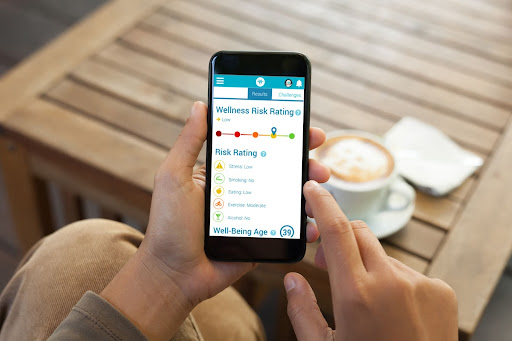
HRAs are used to measure overall health standing. However, the scope of an HRA depends on its intended use. Topics that an HRA might cover include:
....and more.
Comprehensive assessments may include all these topics, but smaller, modular assessments focus specifically on a certain aspect of well-being. For example, a mental health assessment might include questions about psychological well-being, history of mental illness, resilience, financial well-being, anxiety, depression, stress at work, and coping skills.
Implementing a workplace mental health assessment can help pinpoint an individual’s risk of mental illness so that participants can be connected to appropriate intervention strategies. These can include counseling, coaching, helpful resources, or referrals to a physician or other mental healthcare professional. The positive impact of early intervention that started with information gathered from the assessment (and supported by an effective wellness program) provides a greater chance of managing a condition before it worsens, and can reduce healthcare spending for an organization.
There is a wide variety of questions that can be asked in an HRA. Let’s look at Wellness Checkpoint by Carebook as an example. A global leader in health risk management, its comprehensive health risk assessments address physical, emotional, psychological, financial, and organizational well-being. Current health standing and lifestyle is a major component. This can include questions like:
Additional questions cover health history, work environment, work-life balance, mental health, and more. Questions can be presented as a multiple-point Likert scale or yes/no response. Free-response questions are not as common as they’re more difficult to quantify.
Below are examples from the Wellness Checkpoint complete HRA:
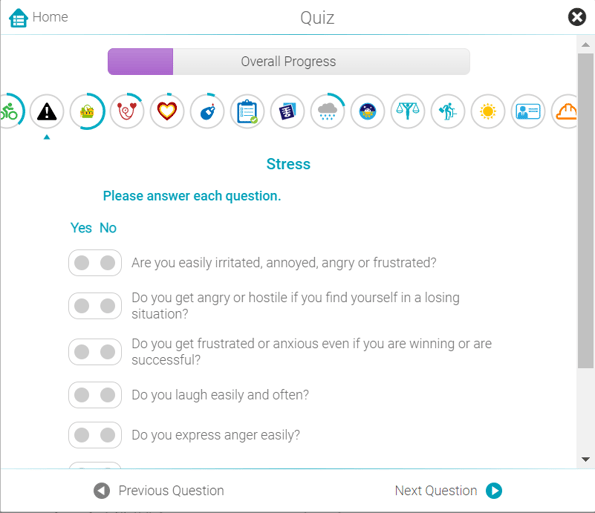
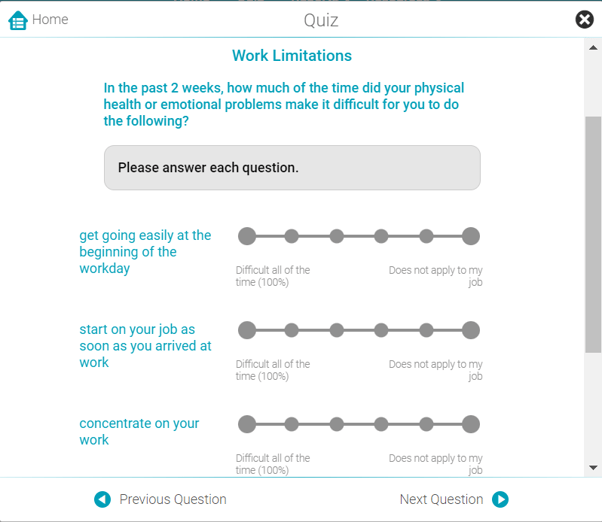
HRAs benefit the organization and the individual. HRAs are key to designing a wellness program that is relevant, engaging, and effective. Too often, wellness programs are missing the key element of engagement, or the ability to keep participants’ attention and maintain participation. A lack of engagement can occur if the wellness program fails to meet the employees’ specific needs and therefore seems irrelevant to the users.
A report from 2020 shows that 70% of large organizations offer an HRA and/or biometric screening as part of their wellness program. This is up from 2013, when only 46% of firms reported doing active clinical screening or HRAs. The upward trend shows that growing numbers of wellness coordinators value data insights to plan relevant and engaging programming.
Benefits to employeesHealth risk assessments provide employees with an overview of their own health metrics and encourage individuals to take better control of their health. During the HRA process, employees evaluate their lifestyle habits in detail. Wellness technology can then use the information collected and combine it with biometric data, including vital signs and blood test results, to gain an accurate view of an individual’s overall wellness. In an effective HRA, a full, easy-to-read report is immediately and automatically given to each participant. This report is kept private from managers, who typically only see personal health information in the aggregate.
Participants not only gain understanding of their current health standing but are given actionable next steps, like recommendations for screenings and lifestyle changes. They can also be connected to counselors or health and wellness specialists who can be a further resource to help achieve their health goals. Personalized goals and activities can then be added to their individual employee wellness programming.
Then interactive wellness technology can support sustained engagement and encouragement for the duration of the program. This is done via push notifications, check-ins with providers, and ongoing programming, such as relevant wellness challenges and educational programs. All of these communications can be powered by HRA data.
Benefits to employersA major benefit employers gain from an HRA is a more effective, data-driven wellness program that meets specific employee needs. HRAs are also associated with cost savings through early detection of illness and generally improved health throughout the workforce. The positive ROI of a well-designed wellness program, including an effective HRA, has been well documented.
For instance, organizations can do a mental health assessment in their workplace to assess team members’ risk of developing a mental illness. With this, they can design appropriate interventions, such as providing coaching and counseling. In turn, this helps the company save on the costs of employee turnover and low productivity.
HRA-informed wellness programs are designed to reduce healthcare spending. Research from the Kaiser Family Foundation and Health Research and Educational Trust found that the average cost of health insurance premiums for families reached $22,221 in 2021, increasing by 4% from 2020. Employers pick up a huge percentage of that cost. But employee health impacts more than just healthcare costs. It affects overall company culture, performance, productivity, and workplace health and safety. Therefore, employers globally have turned to employee wellness programs with HRAs to identify chronic conditions, prevent stress and burnout, address poor engagement, and other organizational challenges unique to their operations.
Mental health benefitsThe distressing global events of the last few years have caused an increase in mental health issues among many employees. According to the latest Centers for Disease Control and Prevention (CDC) data, over 40% of adults in the US live with anxiety and depression, suicidal thoughts, and/or substance abuse. The high rate of mental illness is often associated with forced isolation, difficulty adapting to new work-life challenges, and economic uncertainty.
Employers can use HRAs to dive deeper into the struggles their workers may face and create strategies that address these difficulties. For example, Wellness Checkpoint’s Psychological Well-being Assessment measures personal characteristics that reflect employee mental health and assesses areas where organizational factors may be impacting well-being.
Alignment with current employee needsSimple, ‘feel-good’ wellness programs are often limited to physical activity and nutrition topics. And while these types of programs may be a good starting place for wellness, the reality is that work has evolved significantly and it’s now important for employers to develop more robust wellness programs that align with employees' most urgent needs. Wellness program managers or wellness providers themselves can survey populations about the current work environment and identify potential challenges that hinder employees from being healthy and productive. This can be done directly in a customizable HRA.
Additionally, HRA results enable personalized information to be sent to individuals according to their risk factors. In the best HRAs, this kind of feedback is delivered instantly and automatically upon completion of the survey. This way, participants have greater knowledge about, and access to, benefits that would be the most helpful to them. In many cases these resources include options that have been available for some time, but employees either didn’t know about them, didn’t know how to access them, or didn’t know that they would be helpful. Connecting people and resources allows them to use benefits that were there all along.
Boost organizational cultureHaving a positive corporate culture means that employees enjoy a healthy work environment. Employees in positive work environments are more creative, have stronger relationships with coworkers, and are overall happier. Often, it results in lower turnover and higher productivity. But managers need data to make improvements in workplace culture.
Through carefully designed HRAs, organizations can take a pulse of their organizational culture and see where they can improve. Assessments that are used to inform personalized workplace wellness programs is a strong starting point: it lets workers know they are valued and that their managers care about their well-being.
Since record high numbers of employees are experiencing burnout and unmanaged workplace stress, many managers begin their efforts at culture improvement with mental health programming. An effective first step is to offer a mental health assessment, like the ones in Wellness Checkpoint’s Well-Being@Work suite of assessments.
The data they collect is essential in helping managers delve deeper into an employee’s psychological strengths and challenges in the context of their work experience and workplace culture. The information gathered sheds light on how organizational systems and culture impact employee health, well-being and performance -- designed to drive improvements in organizational culture and processes.
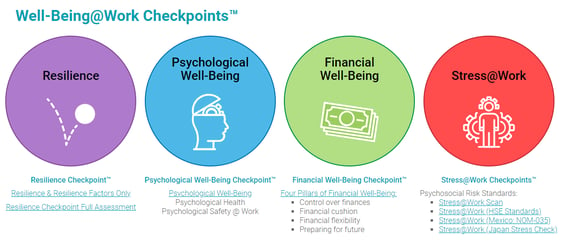
Using HRAs to strengthen wellness programs and organizational culture is an ongoing process. Having a wellness program that is responsive to the HRA findings and provides actionable interventions will yield higher wellness program engagement and meaningful health improvements., bBut that’s just the first step.
Part of an effective wellness program is to reassess employees regularly, to determine if the interventions have resulted in positive change and to track progress over time. Having a robust and flexible wellness platform in combination with regular wellness checkpoints is critical in ensuring that well-intended HRAs don’t go to waste, and that a wellness program stays on the right track.
Wellness programs need to remain relevant, and that can be done by keeping up with employee needs as they evolve. What workers need after the first HRA may be different from what they need a year or more later. And, once employees have been participating in wellness for some time, they’ll need new challenges and opportunities. Wellness coordinators should check in frequently with their populations to know what’s working and what isn’t.
Employers of any size can offer HRAs. And in a post-pandemic environment, the pressure is on employers to provide a quality wellness benefits package, including wellness and an effective HRA. In fact, 66% of employers report feeling that there is a greater expectation of them to take responsibility for their employees’ well-being beyond the workplace, while 47% of employees report hoping that organizations will have an increased focus on employee well-being in the future. In other words, employers know they need top-notch wellness benefits, and employees expect it.
Complete HRAs should be offered on a regular basis and are often distributed annually. This way managers can routinely receive data feedback on how a wellness program is impacting overall employee health and can inform managers of any course corrections that may be required.
Complete assessments can also be offered when there is a significant change in the organization, including the introduction of new machinery or equipment that alters the way work processes are handled, organizational changes like working remotely or significant leadership changes, or a spike in illness or stress.
Typically, there’s no need for participants to do a complete an HRA more than once a year. However, it may be appropriate to distribute shorter, modular assessments more often. Participants and managers may find it helpful to complete certain parts of a larger HRA as necessary. For example, during a stressful period, a mental health assessment can offer insight into population mental and psychological well-being.
Whenever an organization needs to take the pulse of their workforce, and on a regular basis thereafter, an HRA or smaller modular assessments can provide the information required and raise awareness of issues that might otherwise go unnoticed.
HRAs are typically delivered as surveys on an organization’s online wellness platform. They can also be done via other types of digital surveys or even pen-and-paper questionnaires where technology isn’t readily available, although this does significantly slow down the data collection process. Additional information can be gathered via biometric screenings, site visits, an audit of health care claims, review of attendance, and participation in previous wellness programming. However, these sources would provide additional data to the HRA survey information and are not considered part of the HRA itself.
The best wellness platforms allow HRAs (and other wellness programming) to be accessed via website or app, for maximum convenience and reach. Additionally, to reach a global workforce, it’s essential that an HRA adapts to local requirements. The best platforms allow for customizations by region, business unit, and/or site to reflect differences in language, culture, and other relevant considerations. Below is a breakdown of different types of data collection methods.
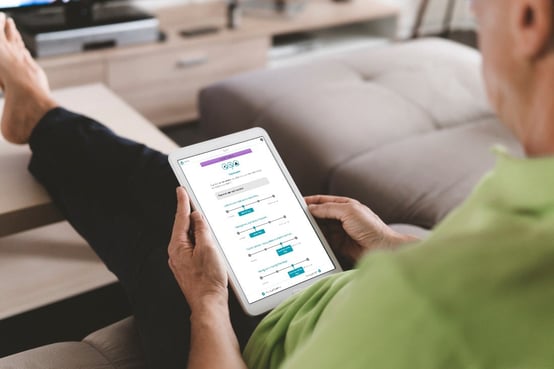
This is the most common method of collecting population health information. Ideally, users can go through the organization’s online employee wellness portal or app, where the HRA is seamlessly integrated into the follow-on wellness programming. Top portals and assessments can be accessed through an app or website with a single sign-on. This way, surveys are simple to distribute and access, automatically gives participants feedback, and can provide instant aggregate reporting to wellness managers.
Organizational biometric screenings provide another way to collect health information that may be more reliable than self-reported information. Participation can be encouraged by incentives like a discount on insurance premiums for participants.
Biometric screenings are frequently done by arranging for a biometric screening vendor to bring nurses and equipment to the workplace to have employees screened on site. Alternatively, participants can do their screening privately with their primary care provider. A third option is home biometric screening kits, which are becoming more common.
Site visits allow for in-person observations of the workplace setting. They can include interviews with managers and employees to discuss health attitudes and beliefs, review health promotion programs and policies, and evaluate the worksite environment for health risks.
A review of healthcare claims can provide insight into top concerns that employees are seeking medical care for and can inform programming to help prevent common issues.
Managers should have a basic understanding of absenteeism to create a baseline. Future attendance data can then show change over time and provide insight into whether programming is helping to decrease absenteeism. Additionally, productivity data can measure the impact of presenteeism over time.
Which program components had high engagement? Which didn’t? What feedback did the program receive? It’s important for wellness managers to know what worked for their population, and what to change, add, or remove in future programming.
The best HRAs provide users with a variety of clear, concise, and individualized reports immediately upon completion of their assessment. They inform the respondent about their personal lifestyle risk status and indicators for future risk, recommend priorities for lifestyle changes, offer suggestions about setting goals, additional health screenings, next steps, and actionable tips to improve health.
When an HRA is integrated into a wellness program, it can guide participants directly to suggested programs and activities to help them set relevant goals and immediately start improving their health.
Below is an example of an individual health risk report generated with the Wellness Checkpoint HRA. Individual health data is always kept private, and only shared with managers in aggregate.
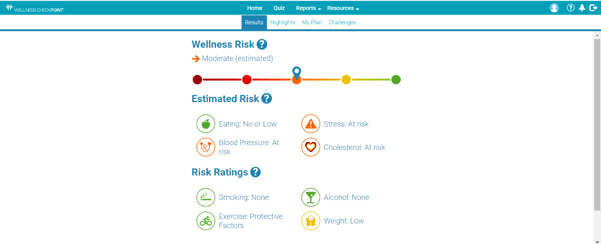
ROI and VOI of health assessments should be considered within the overall ROI of a wellness program. Workplace wellness programs tend to have a higher rate of ROI if they are well-designed from their inception -- and HRAs power a well-structured program. It’s also important that wellness programs are founded in a supportive workplace culture of wellness. Once this is in place, ROI and VOI will follow suit.
For existing wellness initiatives, decision-makers should regularly use HRAs to collect insights on two key metrics:
Did the wellness program improve employee health and wellness?If both were achieved, then the current wellness program is on track for success. If it missed the mark, it’s time to evaluate the program to identify what key areas need improvement. Here are some ways to do that:
Develop a targeted wellness program that brings value to employees. This includes:Improving current wellness programs requires that decision-makers identify the most critical needs and encourage employee engagement. Start by analyzing what areas take up most of the healthcare spending. Is the company spending more on employees with cardiovascular diseases? Does HRA data reflect a high level of cardiovascular disease? If yes, what programs would help lower the risk of such illnesses? Invest in a targeted solution to help reduce costs.
For more information on achieving a high ROI with wellness, read our ROI of Corporate Wellness blog.
HRAs require employees to share personal data, and that requires administrators to be careful with how the data is stored and handled. In some cases, particularly those with group health plans, insurance claims data may also become available to HR teams, third-party wellness programs, and company executives.
How employees can mitigate risksWorkplace wellness programs offer many benefits to employees, but fear of data leaks can be a barrier to participation. This could prevent them from enjoying a significant part of their employee benefits package. Fortunately, there are steps employees can take to help keep their data safe.
Employees should carefully read consent forms. They must thoroughly understand what personal data will be collected and how it will be used, stored, and destroyed. They should also take time to read through the program’s privacy policies, including how much control they have over the data they wish to provide and refrain from providing unnecessary information.
Employers offering employee wellness programs must also understand the legal liabilities and vulnerabilities they may face. Employers should ensure their employees retain complete control of their health data and remain the primary decision-makers of how their data will be used. Start by getting an employee's informed consent and offering a thorough explanation of health data collection and the associated risks of joining a wellness initiative.
Employers should also refrain from requesting PII unless necessary for program administration. According to the HHS, employers must justify the need to receive an individual’s medical record, which must be included within the program's policies and procedures.
While wellness programs remain unregulated, working with vendors who follow stringent standards for data security should be employers’ top priority.
In general, employee wellness programs are run by third-party providers. Unfortunately, for a wellness program to be covered by HIPAA, the workplace wellness program must be part of a group health plan. According to the Department of Health and Human Services (HHS), HIPAA privacy and security don’t apply to those outside this category.
As well as supporting HIPAA compliance, CoreHealth has demonstrated its commitment to data protection and information security by achieving ISO/IEC 27001 Information Security Management Certification. This means all of CoreHealth’s partners can enjoy the benefits of wellness programs and the peace of mind that comes from knowing their data is secure.
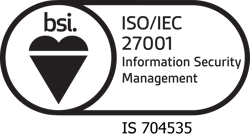
With growing expectations for employers to take responsibility for their employees’ well-being, effective HRAs are more important than ever as a part of a strong overall employee wellness program. They allow managers to know the needs of their population and provide interventions and resources that are the most relevant and effective for their populations. Regularly assessing a population ensures progress is tracked over time and informs course corrections. An effective HRA is the first step, and an essential element, in an effective worksite wellness program.
CoreHealth by Carebook is a total well-being company trusted by global companies to power their health and wellness programs. Our wellness portals help maximize health, engagement, and productivity for over 3.5 million employees worldwide. We believe people are the driving force of organizations and supporting them to make behavior changes to improve employee health is in everyone’s best interest. With the most flexibility, customizations, and integrations of any software in its class, CoreHealth’s all-in-one wellness platform helps achieve great wellness outcomes.
From simple to sophisticated, it's up to you. For more information, visit the CoreHealth website.
We are able to deliver our unique content, motivational challenges, education and personalized programs without the cost of custom development. We can contract a client and have their tailored portal live within hours. I also have the support of the enthusiastic CoreHealth team whenever I need them. I am very pleased.

Amy Cohen, President Inspired Perspectives
From creative job titles, to the implementation team taking our incentive structure and making it so much more than what our last portal could do! Not to mention it saved us over $75,000 per year and allows for us to resell our program to the community. For us, CoreHealth is a win-win."

Emily Elrod, Wellness Coordinator Hamilton Healthcare Systems